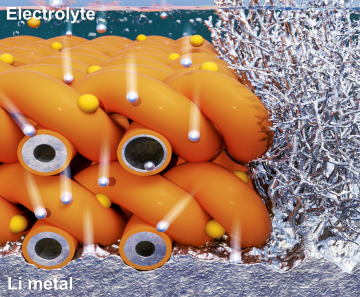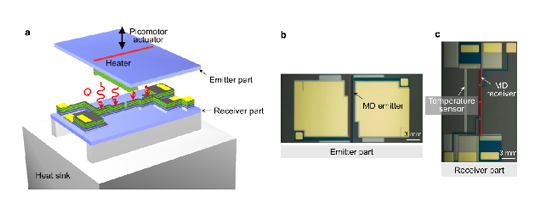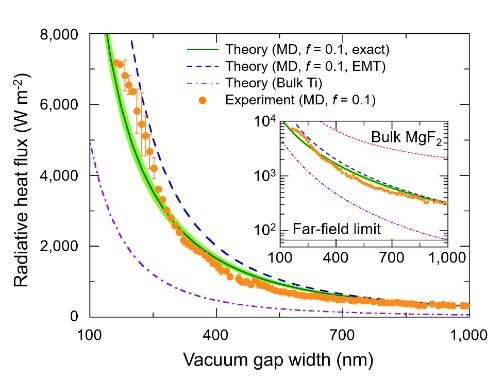KAIST
BREAKTHROUGHS
Research Webzine of the KAIST College of Engineering since 2014
Spring 2025 Vol. 24Nanomaterials control heat transfer through nanogap
KAIST reports the world’s first experimental demonstration of near-field thermal radiation between metallo-dielectric multilayers separated by nanometer-scale vacuum gap distances. Using this result, they also demonstrated that the near-field thermal radiation can be readily tuned by modifying the resonance condition of coupled surface plasmon polaritons (SPPs). This study will provide a new direction for exploiting surface-polariton-mediated near-field thermal radiation between planar structures and can be directly applied to the development of near-field devices such as thermophotovoltaic, thermal rectification, and electroluminescent cooler.
Article | Spring 2019
A research team of Professors Bong Jae Lee and Seung-Seob Lee in the KAIST Mechanical Engineering Department has succeeded in spectrally controlling the near-field thermal radiation between metallo-dielectric multilayers at a nanometer-scale vacuum gap.
It is expected that the tuning of near-field thermal radiation can be readily applied to the development of a next-generation semiconductor packaging and thermal management system. Furthermore, it can be utilized for an energy harvesting device, as well as for a continuous power supply to internet of things (IoT) sensors. The researchers describe their experimental demonstration in an article published in the journal Nature Communications.
When two bodies are placed at a nanoscale distance, radiative heat transfer between them can overcome the blackbody limit by orders of magnitude. This extraordinary phenomenon (called near-field thermal radiation) is due to additional energy transport by photon tunneling in the near field. Through the recent progress of nanotechnology, the near-field thermal radiation between various materials has been demonstrated experimentally.
In particular, numerous theoretical works have focused on employing nanostructures (e.g., thin film, multilayers, and nanowires) for the wide range of application of near-field thermal radiation given that further enhancement as well as a spectral tuning of the near-field radiation can be achieved by exploiting the coupling of surface plasmon polaritons (SPPs) supported by nanostructures. However, experimental demonstration of the near-field enhancement has been limited to bulk materials.
The researchers successfully conducted challenging experiments of near-field thermal radiation between metallo-dielectric multilayers separated by nanometer-scale vacuum gap distances with a custom-built-MEMS-device-integrated platform (Fig. 1a). Using temperature sensors and capacitance sensors integrated in the MEMS device (Figs. 1b, 1c), simultaneous measurements of heat flux and vacuum gap distance could be made.
The researchers showed that the near-field thermal radiation can be significantly enhanced with the metallo-dielectric multilayers through the coupling of surface plasmon polaritons compared to that with bulk metals (Fig. 2). Moreover, by simply changing the number of unit cells and the filling factor of metal (Ti) in the multilayer, tuning of the near-field thermal radiation was possible (Fig. 3).
Professor Bong Jae Lee, who led the research team, said, “The experimentally demonstrated near-field thermal radiation between homogeneous materials so far, has shown a limitation in the control of the spectral near-field radiative heat transfer. For the first time, we have demonstrated that the near-field thermal radiation can be readily tuned by introducing a multilayered nanostructure. This result will pave the way for various applications of near-field thermal radiation in the future.”
Most Popular

When and why do graph neural networks become powerful?
Read more
Extending the lifespan of next-generation lithium metal batteries with water
Read more
Professor Ki-Uk Kyung’s research team develops soft shape-morphing actuator capable of rapid 3D transformations
Read more
Smart Warnings: LLM-enabled personalized driver assistance
Read more
Development of a nanoparticle supercrystal fabrication method using linker-mediated covalent bonding reactions
Read more


